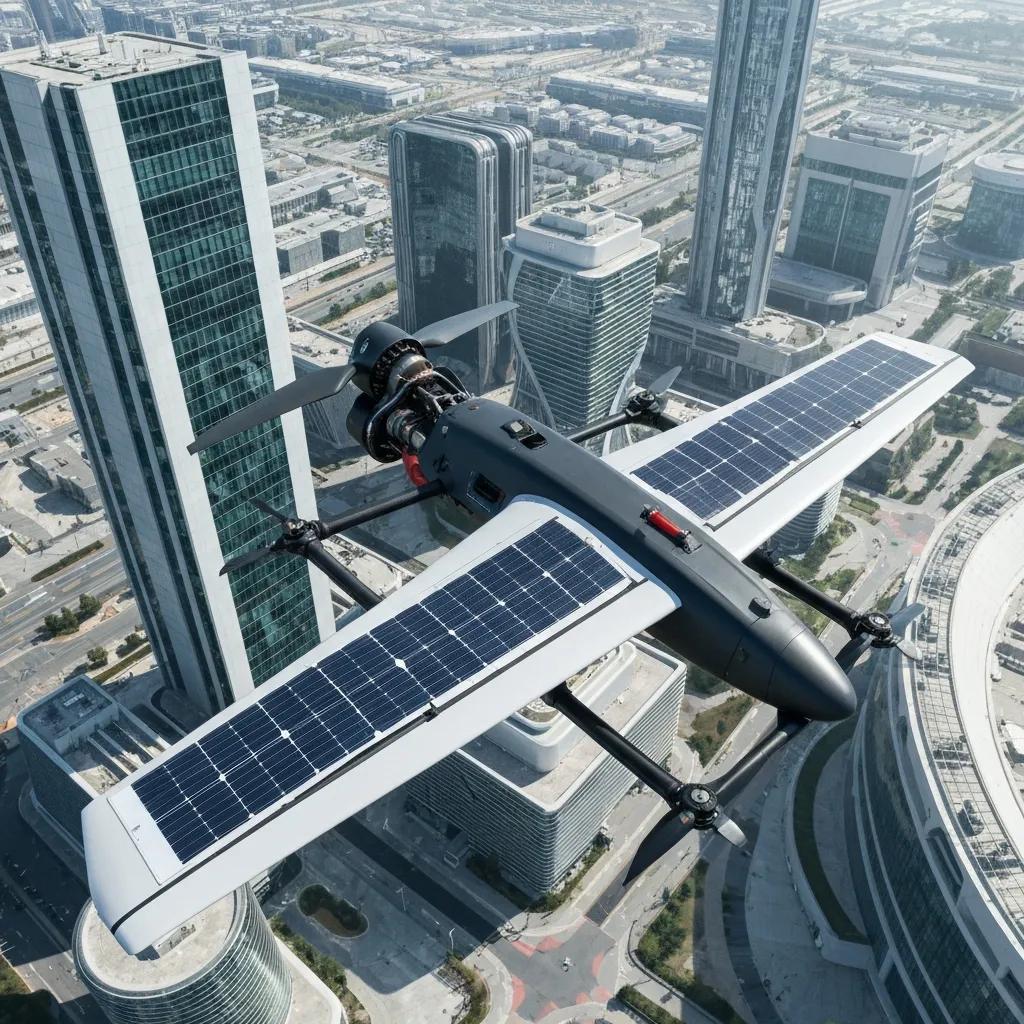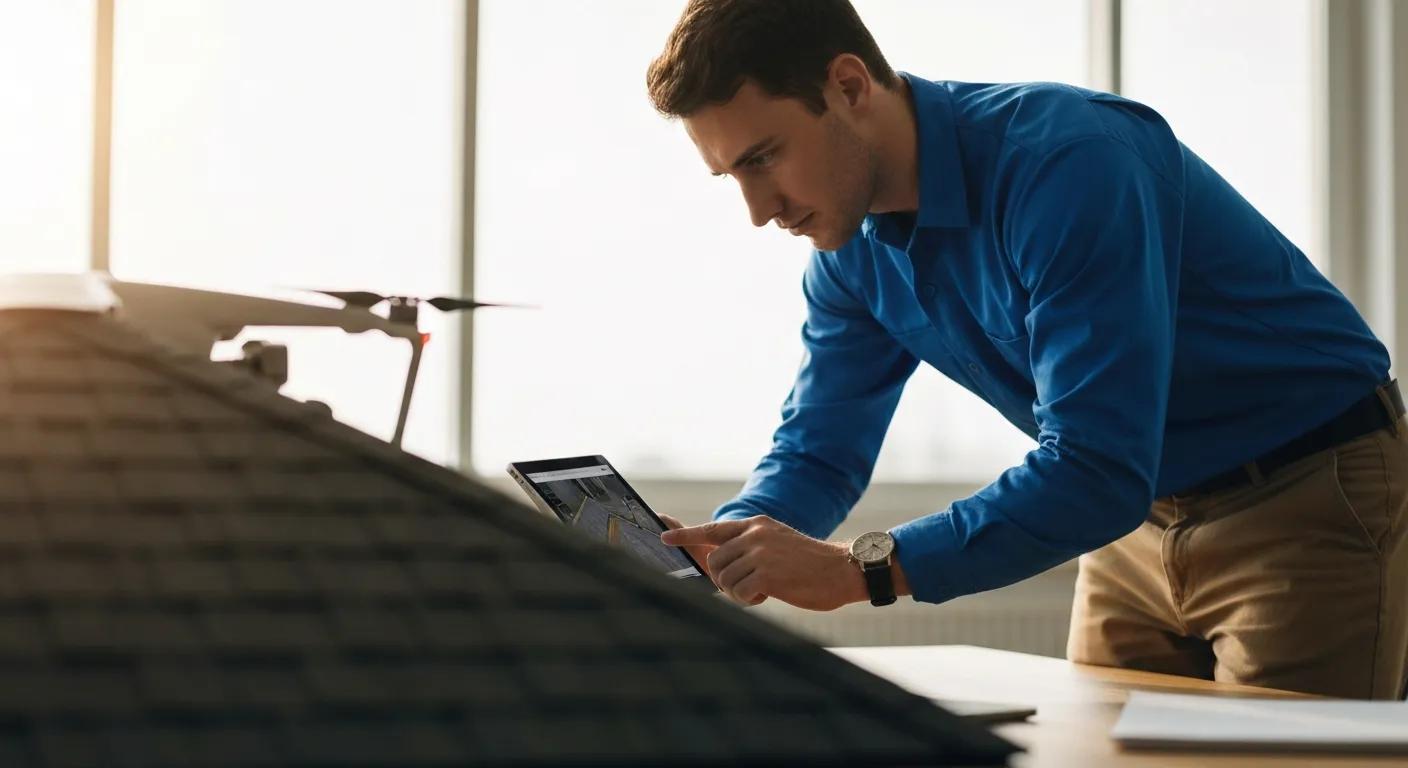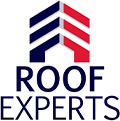
AI Drone Roof Inspection Services: Comprehensive Guide to Automated, Accurate, and Safe Roof Assessments
AI drone roof inspection combines unmanned aerial vehicles (UAVs) with computer vision and machine learning to rapidly capture high-resolution visual, thermal, and spatial data of roofs and translate that data into actionable findings for property managers, insurers, and roofing teams. This guide explains how sensors, Edge and cloud AI, and structured reporting work together to improve detection accuracy, accelerate claims and repairs, and reduce risk for inspection crews. Many stakeholders struggle with inconsistent manual inspections, slow claim cycles, and hidden moisture issues that escape visual checks; AI-driven drones address these pain points by delivering repeatable, timestamped evidence and prioritized severity scores. You will learn the principal benefits, the end-to-end inspection workflow, sensor and AI model trade-offs, quantifiable cost and time savings, how inspection outputs support insurance claims and predictive maintenance, and real-world applications for commercial, residential, and solar-integrated roofs. The article draws on current research trends and technical best practices, offers comparative EAV tables to make sensor and outcome trade-offs clear, and includes practical next steps for teams ready to evaluate automated inspections. After understanding the technical and business value, readers can act on clear conversion options placed where they naturally follow the information.
What Are the Key Benefits of AI Drone Roof Inspections?

AI drone roof inspections deliver faster, safer, and more consistent assessments by combining high-resolution aerial imaging with automated analysis that flags defects, thermal anomalies, and geometry changes for prioritized repair action. The mechanism—sensors capture multimodal data and AI models detect, classify, and score anomalies—yields objective, timestamped evidence that accelerates decisions and reduces unnecessary roof access. The result is measurable improvement in detection of hail, granule loss, flashing failure, and moisture intrusion while keeping personnel on the ground. Below is a concise list of primary benefits that stakeholders cite when comparing automated inspections to conventional rooftop walks.
AI-driven inspections provide five core advantages:
- Enhanced detection accuracy: computer vision and thermal analytics identify micro-damage and moisture that visual checks can miss.
- Improved safety: remote data capture eliminates ladder- and rooftop-walking risks for inspectors.
- Faster turnaround: automated analysis and templated reports reduce time from capture to actionable insight.
- Cost savings: fewer repeat inspections and reduced labor and equipment exposure lower lifecycle costs.
- Better documentation: geotagged, timestamped multimedia evidence supports claims and maintenance planning.
These benefits lead directly into the specific technical mechanisms—sensor suites and AI models—responsible for improved accuracy and reliability, which the next subsection examines in detail.
Different inspection targets require different detection types and produce varied downstream impacts; the table below compares key benefit areas and their direct value to repairs and claims.
This comparative table clarifies how benefits translate into outcomes:
This mapping shows how each sensor and analytic output targets specific repair workflows and claim needs, guiding investment in the right sensor combinations for an inspection program. The next subsection will expand on the sensors and AI techniques that enable these benefits.
How Do AI and Drones Improve Roof Damage Detection Accuracy?
AI and drones improve damage detection accuracy by pairing sub-centimeter visual resolution with machine learning models trained to recognize roofing failure modes, producing labeled outputs such as bounding boxes, heatmaps, and severity scores. High-resolution RGB imaging captures granularity of surface damage while thermal cameras reveal subsurface moisture and insulation defects invisible to the eye; together, algorithms fuse these cues to classify hail pitting, granule loss, cracked flashing, and pooling. Models commonly use object detection and semantic segmentation to delineate defects and assign probability or severity metrics, enabling prioritization of repairs. Ground-truthing and iterative training with labeled datasets increase model precision over time, and combining outputs with geolocation metadata ensures detected issues map directly to actionable coordinates for crews.
Improved detection accuracy reduces unnecessary scaffolding and manual verification, and that reduction shapes expectations for inspection frequency and follow-up, which the next subsection addresses by contrasting safety gains from remote inspections with traditional rooftop approaches.
How Do Drone Inspections Enhance Safety Compared to Traditional Methods?

Drone inspections enhance safety by removing the need for inspectors to climb ladders or walk fragile roof surfaces, shifting risk from human operators to remotely piloted systems and automated flight planning routines. Remote pilots and automation reduce exposure to fall hazards, heat stress, and unstable surfaces while enabling crews to remain on the ground during data capture. Regulatory best practices and pre-flight risk assessments, including geofencing and automated obstacle avoidance, further reduce incident potential and ensure compliance with aviation rules. Because drones can inspect difficult or compromised roofs without putting personnel at risk, organizations can assess storm-damaged properties faster and with lower liability, preserving human resources for repair rather than hazardous data collection.
Safer inspections naturally shorten scheduling windows and make more frequent monitoring feasible, which ties directly to the inspection process and the practical steps teams should expect during an AI-assisted survey.
How Does the AI Drone Roof Inspection Process Work?
The AI drone roof inspection process follows a structured workflow that begins with planning and permissions, proceeds through data capture with sensor-specific flight profiles, and finishes with AI analysis and delivery of annotated reports designed for decision-making. Preflight includes site reconnaissance, airspace checks, and establishing data collection objectives such as thermal moisture scans or LiDAR mapping; these steps ensure the right sensors and flight lines are used. During capture, pilots execute automated missions that collect RGB, thermal, and LiDAR datasets as required, then data pipelines ingest and preprocess imagery for AI inference. Automated models run detection, segmentation, change detection, and severity scoring before assembling georeferenced, timestamped reports with multimedia evidence and recommended next steps for repairs or further evaluation.
Below is a numbered, featured-snippet-style summary of the core steps for quick reference.
- Preflight planning: permissions, objectives, and sensor selection established.
- Automated flight & capture: consistent flight lines gather RGB, thermal, and LiDAR data.
- Data ingestion & preprocessing: images are aligned, calibrated, and geotagged for analysis.
- AI analysis: detection, classification, severity scoring, and change detection occur.
- Reporting & delivery: annotated maps, photos, and prioritized recommendations are produced.
This stepwise outline leads into a technology comparison that clarifies which sensors and AI models serve specific inspection goals, helping teams choose the right configuration for their needs.
The table below compares common sensors and AI model approaches with typical use cases and strengths to make selection decisions easier.
Understanding these sensor/model trade-offs informs mission design and reporting expectations, and the following subsection explains how AI transforms raw captures into structured findings and severity metrics.
What Types of Drones and Sensors Are Used for Roof Assessments?
Common inspection platforms range from compact quadcopters equipped with high-resolution RGB cameras to industrial UAVs carrying thermal sensors and LiDAR units; selection depends on inspection scale and objectives. Small rotary drones with gimbal-stabilized RGB cameras are ideal for quick residential surveys, delivering crisp imagery for visual defect detection, while thermal cameras add moisture and hot-spot detection crucial for leak identification. For large commercial roofs and precise geometry needs, LiDAR-equipped drones capture accurate point clouds for slope, penetration, and volume calculations. Mission planners often combine thermal and RGB in a single flight to cross-validate anomalies, and sensor fusion in post-processing improves confidence in flagged defects.
Choosing the right platform and sensor mix sets the stage for appropriate AI processing choices, which the next subsection explores in depth.
How Is AI Applied in Analyzing Roof Inspection Data?
AI analyzes roof inspection data through a pipeline of preprocessing, inference, and post-processing: images are aligned and normalized, models detect and segment defects, anomaly scores are assigned, and outputs are compiled into structured reports. Detection models flag discrete features like missing shingles or cracked flashing, semantic segmentation quantifies affected areas, and anomaly detection approaches identify atypical thermal or color patterns that warrant further review. Predictive models then use historical inspection sequences to forecast degradation trends and recommend prioritized interventions. Edge inference can deliver fast, onsite triage while cloud-based training and ensemble models refine accuracy over large datasets, providing a balance between latency and model sophistication.
These analytic outputs—bounding boxes, heatmaps, severity scores, and time-based trends—directly feed into reporting templates used by adjusters and maintenance teams, which the following sections detail in the context of cost, timeline, and claims support.
What Are the Cost and Time Advantages of Automated Roof Inspections?
Automated roof inspections typically reduce on-site capture time and analysis turnaround, lowering labor costs and enabling quicker repair cycles that reduce secondary damage and claim escalation. The combination of rapid aerial capture and automated AI scoring means a single-family roof can be surveyed in minutes with analysis delivered in hours, while portfolio-scale surveys leverage consistent flight plans to inspect many roofs per day. Reduced repeat inspections, fewer manual measurements, and faster claim documentation translate into lower total cost of ownership for maintenance programs. Below is an overview of the time and cost dynamics and the variables that most influence pricing and scheduling for automated inspections.
Key cost and time drivers include roof size, sensor suite complexity, data turnaround requirements, and regulatory or site-specific access constraints. Faster turnaround yields earlier repair action, which reduces secondary interior damage costs and accelerates insurance settlements. Investing in targeted periodic inspections creates a data history that improves predictive maintenance and budgets for capital replacement more accurately.
The table below provides a compact view of typical time and cost metrics for automated inspections to aid planning and decision-making.
These metrics demonstrate how automated inspections compress timelines and lower operational costs, and the next subsection gives sample scenario timelines to set realistic expectations for residential vs commercial projects.
How Quickly Can AI Drone Inspections Be Completed?
Typical completion times vary by scale: a single-family home can be captured in 10–30 minutes with analysis delivered within a few hours, while a 100,000 sq ft commercial roof may require several flight segments and return processed deliverables within 24–48 hours depending on sensor complexity. Weather, required permissions, and the need for LiDAR or thermal mapping affect scheduling, and edge-processing can shorten analysis time for high-priority triage. Rapid capture and automated pipelines also make same-day preliminary findings feasible for urgent storm-related assessments, enabling faster mitigation decisions. Planning realistic windows allows teams to align repair crews and claims adjusters with the expected data delivery timeline.
Faster completion directly lowers the cost of emergency responses and supports more frequent monitoring, which is explored next in terms of long-term maintenance savings.
How Do Automated Inspections Reduce Overall Maintenance Costs?
Automated inspections reduce maintenance costs by enabling earlier detection, better budgeting through accurate quantities and severity scores, and fewer emergency repairs due to proactive interventions informed by predictive trends. By quantifying affected areas and prioritizing based on objective severity metrics, property managers can schedule targeted fixes rather than full replacements, deferring capital expenditures and avoiding catastrophic failures. Data-driven vendor selection and verified pre- and post-repair imagery reduce disputes and rework, which further cuts indirect costs. Over time, periodic inspections accumulate datasets used by predictive models to forecast component lifecycles and optimize maintenance intervals.
Lower total lifecycle cost comes from reduced emergency work, more accurate material ordering, and decreased administrative friction in claims and contractor negotiation, which is why many large portfolios adopt automated inspection routines as part of routine asset management.
How Do AI Drone Roof Inspections Support Insurance Claims and Repairs?
AI drone inspections support insurance claims and repairs by producing standardized, timestamped, and georeferenced evidence packets—high-resolution photos, thermal overlays, annotated AI findings, and severity scoring—that align with adjuster workflows and help reduce back-and-forth validation. Structured reports include defect location, visual and thermal proof, recommended remedial actions, and measurable area estimates to streamline scope creation and cost estimation. Change-detection outputs that compare current and historical inspections help determine causation and pre-existing conditions, improving claims accuracy. These deliverables shorten decision cycles for adjusters and give contractors clear, prioritized scopes to execute repairs efficiently.
The next subsection lists the typical data outputs provided and maps them to common insurer documentation requirements to show how drone-derived artifacts satisfy claim needs.
What Data and Documentation Do AI Drones Provide for Claims?
AI drone inspections produce a consistent set of deliverables useful for adjusters and repair teams: time- and GPS-stamped high-resolution photos, thermal overlays highlighting moisture or hot spots, annotated images with AI-detected defects and severity scores, downloadable maps and area calculations, and structured PDF reports or machine-readable summaries that integrate with claims systems. These outputs map directly to adjuster requests for visual proof, chronology, and quantified damages, reducing the need for repeat site visits. Geotagged evidence supports chain-of-custody expectations while annotated severity metrics help prioritize urgent repairs. Providing sample report formats during quote requests helps insurers and property owners assess the inspection scope and analysis depth.
This standardized evidence package also feeds into predictive maintenance workflows, which the following subsection describes in terms of lifecycle extension.
How Does Predictive Maintenance Extend Roof Lifespan?
Predictive maintenance extends roof lifespan by using periodic inspection data to detect degradation trends early, enabling prioritized, lower-cost interventions before minor defects escalate into major failures. Time-series analysis of defects—tracking granule loss, flashing deterioration, or progressive leaks—lets maintenance teams schedule repairs based on risk and ROI rather than fixed intervals. Predictive models estimate remaining useful life for components and support budgeting for phased replacements, which flattens capital expenditure peaks. Over multiple inspection cycles, accumulated data improves forecasting accuracy and helps owners optimize maintenance intervals tailored to material, climate, and usage patterns.
With a predictive approach informed by drone-derived data, asset owners can shift from reactive to proactive maintenance, reducing unplanned downtime and lowering total cost over the asset lifecycle.
What Are the Main Applications of AI Drone Roof Inspections?
AI drone roof inspections serve multiple use cases across commercial property management, residential services, solar asset monitoring, insurance workflows, and contractor verification, each with tailored sensor and reporting configurations. For commercial portfolios, automated mapping and consistent condition reports support budgeting and scheduled maintenance. Residential use cases include pre-sale inspections, post-storm assessments, and homeowner maintenance checks. Solar operators leverage thermal imaging to detect hotspot cells, soiling, and mounting issues that reduce production. Contractors and insurers use standardized annotated reports to speed estimates, track repairs, and verify work completion.
Below are recommended sensor/configuration pairings by use case to help planners choose appropriate missions and reporting templates.
- Commercial portfolio surveys: LiDAR + high-res RGB for geometry and inventory.
- Residential assessments: RGB + targeted thermal scans for leaks and visual defects.
- Solar panel inspections: High-resolution thermal + RGB for hotspot detection and soiling.
These application-specific recommendations lead into detailed examples for commercial and residential contexts, showing the practical advantages and typical workflows for each.
How Are Commercial Properties Benefiting from Drone Roof Surveys?
Commercial properties benefit from drone surveys through rapid coverage of large roof areas, consistent condition monitoring across portfolios, and accurate geometry used for material estimates and budgeting. Automated flight plans inspect multiple buildings efficiently, generating comparable condition scores that support portfolio-level prioritization and capital planning. High-density data capture combined with LiDAR-derived measurements enables precise area and slope calculations used in tendering and repair costing. The result is a repeatable inspection cadence that reduces emergency interventions and aligns maintenance spend with verified need.
These advantages make drone surveys a strategic tool for property managers who must balance cost, risk, and service continuity across many assets.
How Do AI Drones Assist Residential Roof Assessments and Solar Panel Integration?
For homeowners, AI drones provide quick pre-sale inspections, post-storm damage assessments, and maintenance checks that deliver clear repair recommendations without exposing inspectors to roof hazards. For residential solar, thermal imaging detects underperforming cells, string-level hotspots, and soiling that reduce generation; combining thermal and visual imagery speeds identification and verification of panel-level issues. Deliverables for homeowners typically include annotated photos, simple severity labels, and prioritized repair checklists that contractors can act on immediately. Homeowner-focused reports help with disclosure during sales and streamline claims after weather events.
Practical expectations for residents include short scheduling windows, minimal disruption, and clear, actionable documentation—factors that increase acceptance of drone-based assessments for everyday roof care.
What Are the Most Common Questions About AI and Drone Roof Inspections?
Prospective buyers and stakeholders commonly ask about accuracy, cost, timing, regulatory constraints, and data privacy; clear, direct answers help set expectations and reduce procurement friction. Short, snippet-optimized answers below address accuracy and cost first, since those are top considerations for decision-makers. After the FAQs, readers are invited to request a follow-up for specific project estimates or consultation to convert high-intent interest into a next step.
How Accurate Are AI Drone Roof Inspections Compared to Manual Inspections?
AI drone roof inspections are often equal to or superior to manual inspections for visible and thermal anomalies because they combine consistent high-resolution imaging with automated detection models that remove human variability and increase repeatability. While some occluded or interior-access-only defects remain beyond aerial detection, drones excel at identifying surface damage, thermal moisture patterns, and geometry issues with quantifiable confidence scores. Accuracy depends on sensor resolution, model quality, and environmental conditions; combining drone data with targeted ground validation yields the most complete assessment. For many use cases—storm triage, inventorying defects, and moisture detection—AI-enhanced drone inspections reduce missed issues and speed corrective action compared with ad-hoc manual rooftop walks.
How Much Does a Drone Roof Inspection Cost?
Drone roof inspection costs vary based on roof size, sensor suite, data turnaround, and reporting depth; instead of fixed pricing, stakeholders should evaluate quotes by deliverable set, sample reports, and the sensors included. Key cost drivers include use of thermal and LiDAR sensors, expedited analysis, and large-scale portfolio logistics; residential RGB-only captures are typically lower-cost than multi-sensor commercial surveys. When soliciting quotes, request sample annotated reports, modeled area estimates, and a clear breakdown of what is included to compare value rather than price alone. Transparent deliverables and predictable turnaround typically yield better long-term ROI than low-cost, low-detail options.
If you want a project-specific estimate or assistance scoping an inspection, request a free cost estimate to align scope with needs and budget.
For organizations ready to evaluate services, consider taking the next steps: Book an Inspection to see how automated reports look in practice
For detailed scoping, schedule a consultation to obtain a tailored free cost estimate or discuss periodic monitoring plans that support predictive maintenance and claims readiness.

